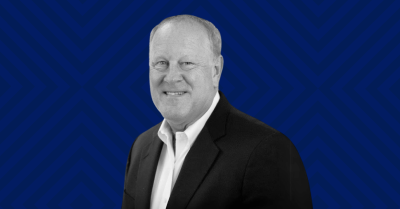Elaine is a Marketing Associate at ReSource Pro Compliance
A single surplus lines policy may pass through a lot of hands during its existence. Each individual or entity involved in the process has a specific role to play, and the professionalism of each contributes to the integrity and growth of the insurance industry as a whole—and of the surplus lines market in particular.
So, let’s take a closer look at the various players that make up the surplus lines ecosystem.
Insureds
The foundation of the surplus lines ecosystem is, of course, the insureds—individuals and businesses that need to cover their risks but cannot find an admitted insurance company willing to do so. The surplus lines underwriting process requires the insured to provide detailed and accurate information about the nature of their risk; and, of course, the insured has the final decision about whether to accept a proposed policy. The insured also is responsible for making premium payments and for reporting any changes in their circumstances that may require an endorsement (or change) to the policy terms. They also decide whether to request renewal of a policy as its expiration date approaches.
Retail/Producing Agents
Insureds frequently work directly with retail/producing agents. These individuals help potential policyholders determine the nature and scope of their risks. It’s the retail agents who complete the diligent effort search, attempting to place a risk with several (usually 3) admitted carriers writing that kind and class of insurance. They may also check a state’s export list to determine whether regulators exempt a particular risk from the diligent search requirement. Additionally, the retail agent collects the premium tax, stamping fees, and other state-specific fees from the insured and forwards them to the state.
Wholesale/Surplus Lines Brokers
Retail agents who work with clients who frequently need surplus lines coverage may choose to become licensed for surplus lines and function similarly to a surplus lines broker, but they don’t have to hold a surplus lines license to fulfill their responsibilities in the process. That’s because the responsibility for negotiating coverage falls to wholesale/surplus lines brokers. While wholesale brokers don’t actually bind coverage, they do review the information about the nature and scope of the insured’s risk to determine the “best fit” for an E&S insurer. The broker then submits the insured’s completed insurance application to the eligible insurer for review and (hopefully) approval. Brokers must have an active surplus lines license in order to negotiate and place coverages.
Non-Admitted Insurance Carriers
While admitted carriers do have a role in the process for states and coverages that require declinations, it’s non-admitted carriers that play the key role in covering excess and surplus lines risks. Consequently, these insurance companies undergo a rigorous review process before state regulators approve them to accept non-admitted business in their jurisdiction. The regulator responsible for overseeing the surplus lines market generally provides a copy of the state’s eligible carriers list on its website. Depending on the state, this might be the surplus lines stamping office, the surplus lines association, or the department of insurance. Regulators update their lists on a regular basis, so always check the most current version of the list before placing business.
Lloyd’s Syndicates
Another type of entity that may appear on state eligible insurers lists are Lloyd’s syndicates. These syndicates are the modern-day counterparts of those gentlemen of means who met in Edward Lloyd’s Coffee House to hear the latest news about Great Britain’s shipping industry. Today, groups of individuals entrust their assets to teams of underwriters associated with Lloyd’s of London. The underwriters identify good risks in the non-admitted market and use the invested funds (along with collected premiums) to cover potential losses. If few or no claims are made, Lloyd’s makes money on the policy; and thus a portion of those profits return to the investors as dividends.
Reinsurers
While Lloyd’s syndicates participate in the process before a policy is bound, surplus lines insurers also have another ally they can turn to after policies are in place: the reinsurers. Reinsurance is sort of like insurance for insurance companies. The carrier essentially “sells” a percentage of a policy to a reinsurer. The reinsurer agrees to underwrite that portion of the insurance coverage in exchange for a share of the premium. Since the non-admitted market provides a home for risky or very expensive coverages, reinsurers play a vital role in helping surplus lines carriers preserve their liquidity and protect their financial stability.
MGAs
Because of the unique and complex nature of surplus lines risks, many non-admitted carriers choose to “outsource” part of their role to third parties. These are the managing general agents (MGAs). The contract between an MGA and an insurer spells out its specific duties. Acting as an MGA requires a specific license type. Lots of states also require MGAs to hold active licenses that cover the products they will be managing and services they provide before they apply for an MGA license. Several states don’t issue an MGA license per se but require “MGAs” to go through a very similar process to obtain a registration, designation, or endorsement (and hey, a license by any other name). Additionally, agencies that don’t meet the requirements for an MGA license will still need licenses appropriate for the services they provide.
Regulators
The final stakeholders in the surplus lines ecosystem are, of course, the state regulators and their allies. It’s their responsibility to ensure that the producing agents, brokers, carriers, Lloyd’s syndicates, reinsurers, and MGAs doing business in their states comply with state laws and regulations. Exactly which government entities oversee the non-admitted market varies from state to state, and it’s not uncommon for several different agencies to work together to protect the interests of consumers.
In many states, the Department of Insurance (DOI) supervises the non-admitted market, sometimes with help from their Department of Revenue to process tax filings and payments. About 20 states have a Surplus Lines Association (SLA). These are groups of insurance professionals who come together to advocate for our industry with state lawmakers and regulators. SLAs also provide invaluable information resources, including offering continuing education and credentialing for surplus lines professionals. Additionally, in some states, SLAs take an active role in protecting consumers (and the insurance industry as well) by conducting financial reviews and providing oversight of the non-admitted market.
Finally, there are the stamping offices. Fifteen states currently have stamping offices, and they process more than half of all surplus lines premiums written in the U.S. Stamping offices:
- Review surplus lines transactions to ensure they comply with state laws and regulations
- Assess the financial soundness of eligible non-admitted insurers, and
- Protect consumers from ineligible insurers.
Stamping offices often collect premium taxes and other state-specific fees and pass them along to state governments. They are not government agencies, however. Surplus lines insurers created the stamping offices to help self-regulate the industry and avoid costly penalties imposed by state regulators.
Phew! That Wraps It Up
Of course, not all of these entities will be involved in every transaction, but understanding the role each plays can help you navigate the surplus lines process effectively. It shows why communication between the various players and with insureds is so essential. It’s also why regulators want to see thorough documentation and transparency at each step of the process. Think of it as a relay race; nobody wants to be the one who drops the baton!
Find out how ReSource Pro helps insurance agencies and producers meet their licensing and compliance needs by visiting our compliance page.



